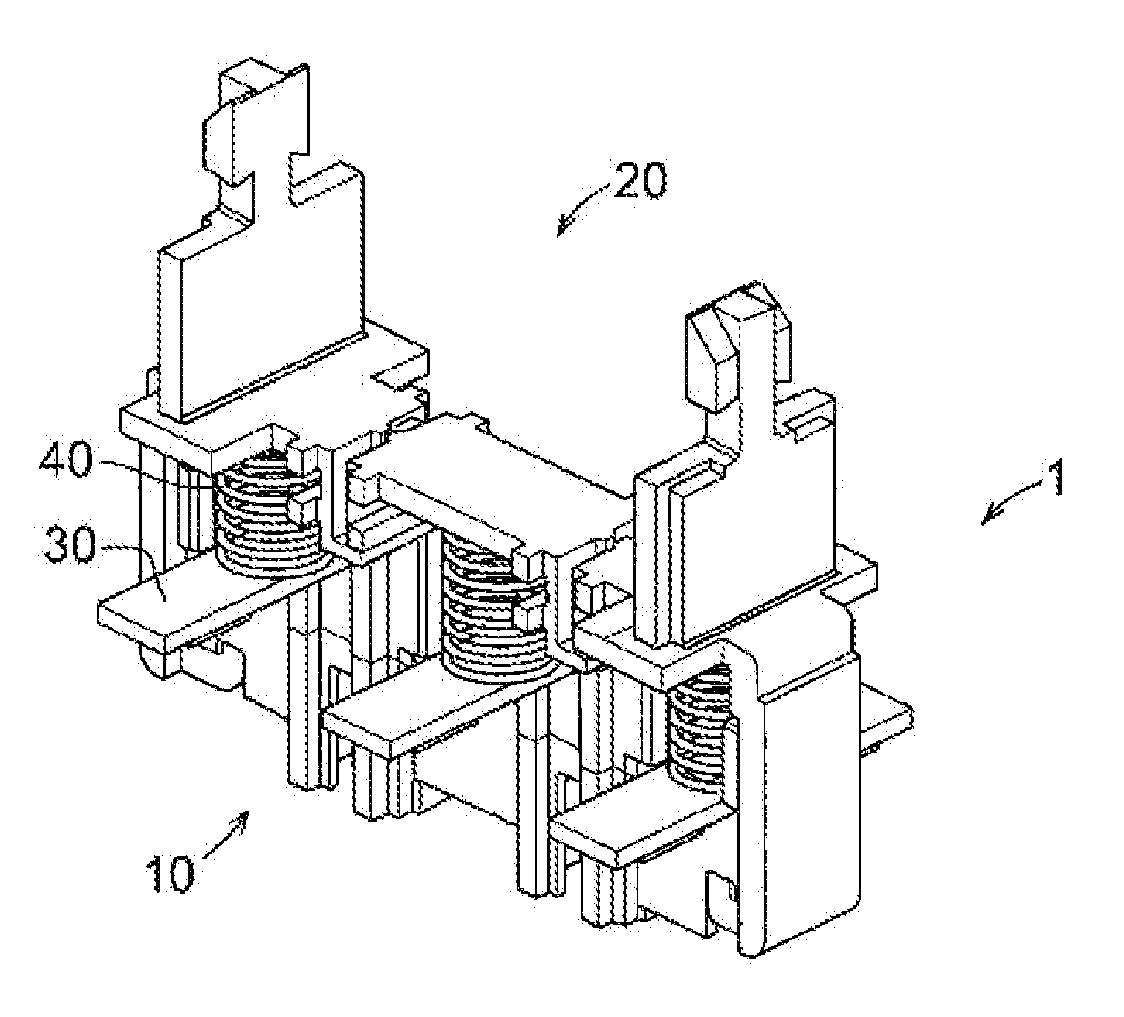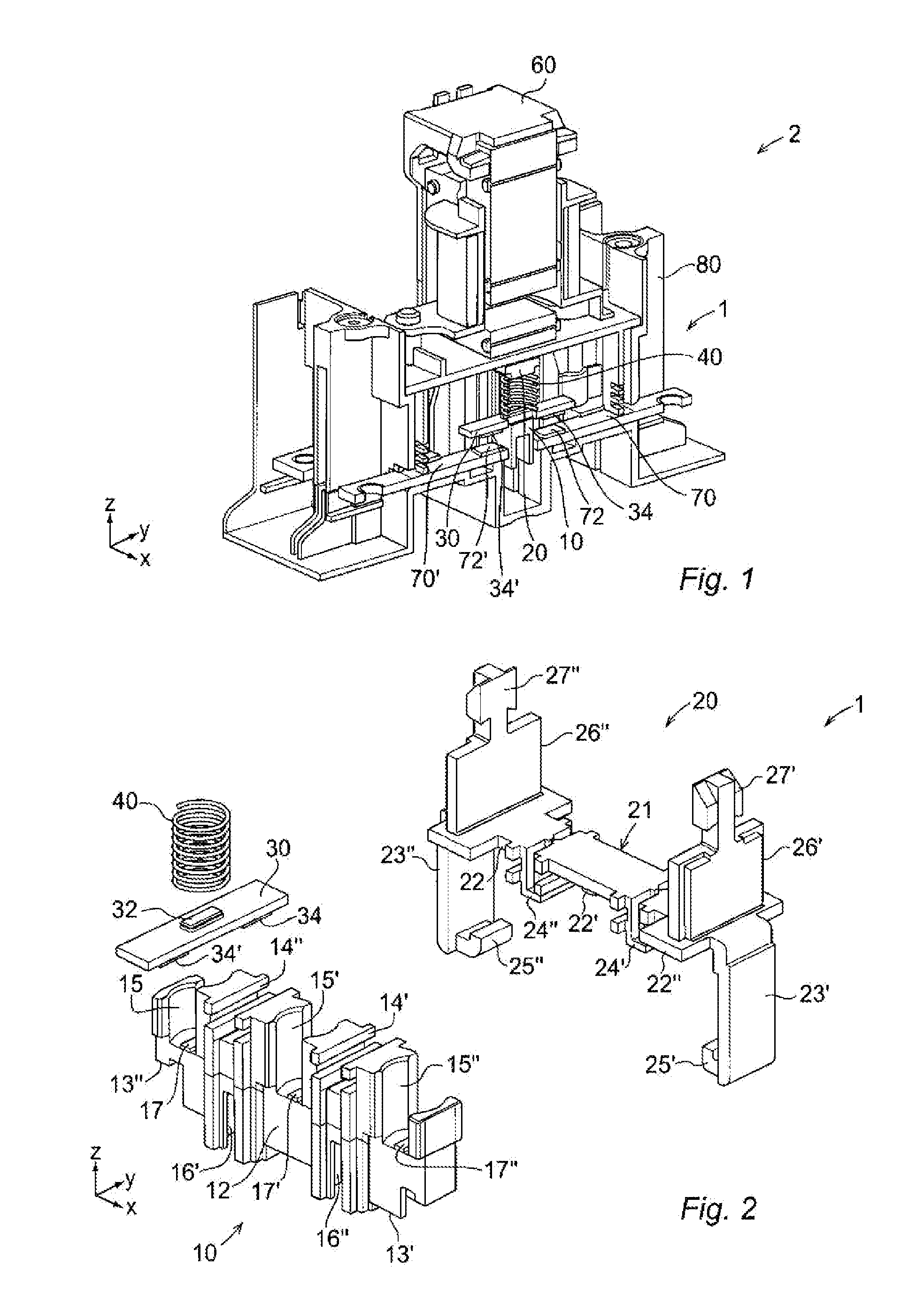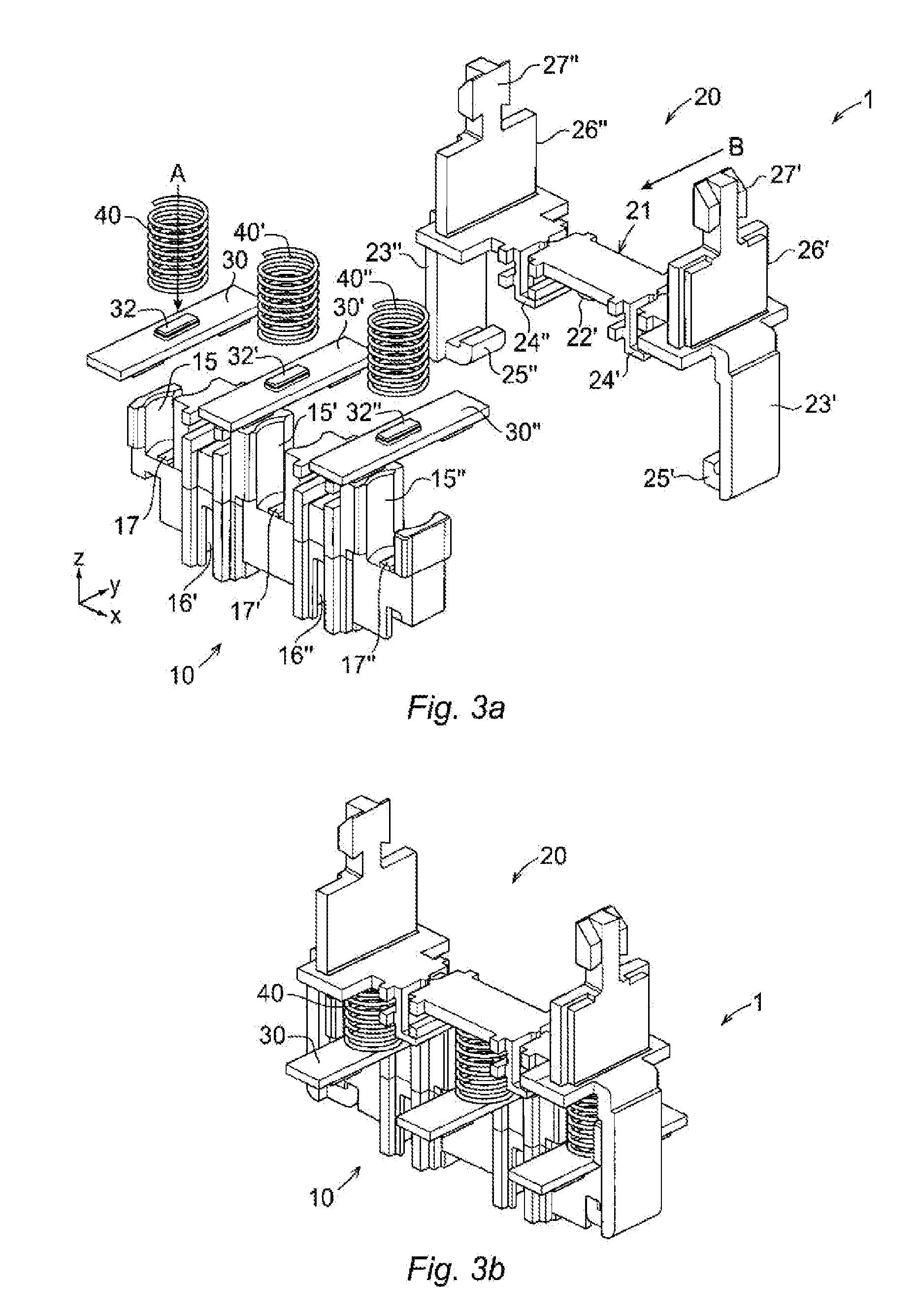Low-voltage contactor
a contactor and low-voltage technology, applied in the direction of connection contact material, relay, coupling device connection, etc., can solve the problem of difficult automation of the manufacturing process, and achieve the effect of reducing the cost of producing contactors, facilitating handling, and reducing the manufacturing time of contactors
- Summary
- Abstract
- Description
- Claims
- Application Information
AI Technical Summary
Benefits of technology
Problems solved by technology
Method used
Image
Examples
Embodiment Construction
[0019]FIG. 1 shows a partial cross-sectional view of a contactor having a contact carrier, according to a first embodiment of the invention. The contactor 2 includes an actuating unit 60, a stationary contact 70, and a contact carrier 1 having a framework part 20 and a holder part 10 including a movable contact 30 and a spring 40. In this embodiment, the contactor is a three-pole low-voltage contactor. It is understood that the view is a portion of the contactor, and therefore not all the elements of the contactor are illustrated in the figure. The number of the movable contacts depends on the number of the poles. In this embodiment, three movable contacts have been provided.
[0020]The stationary contact 70 is sited on a housing 80 of the contactor 2. In this embodiment, two stationary contacts 70, 70′ are arranged aligned with for each movable contact 30. Each stationary contact 70, 70′ includes a contact surface 72, 72′.
[0021]The movable contact 30 includes two movable contact surf...
PUM
 Login to View More
Login to View More Abstract
Description
Claims
Application Information
 Login to View More
Login to View More - R&D
- Intellectual Property
- Life Sciences
- Materials
- Tech Scout
- Unparalleled Data Quality
- Higher Quality Content
- 60% Fewer Hallucinations
Browse by: Latest US Patents, China's latest patents, Technical Efficacy Thesaurus, Application Domain, Technology Topic, Popular Technical Reports.
© 2025 PatSnap. All rights reserved.Legal|Privacy policy|Modern Slavery Act Transparency Statement|Sitemap|About US| Contact US: help@patsnap.com



